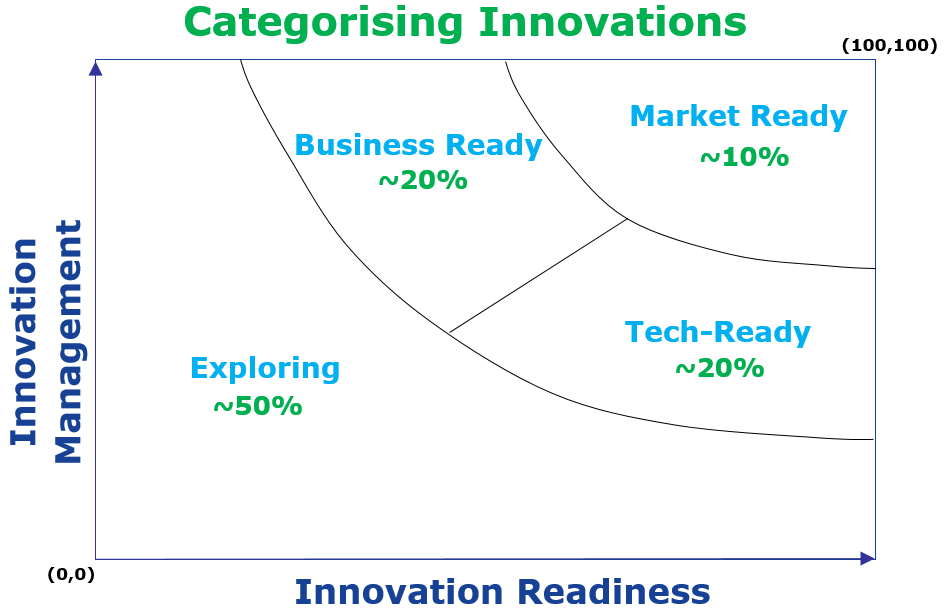In order to provide some insight about market readiness every innovation featured in Innovation Radar is assigned to one of the following four maturity categories:
Market ready:Innovations that are technologically mature and show high commitment of the project consortium to bring them to the market. They are considered ‘Ready for the market’ (about 10% of all innovations)
Tech ready:Innovations that are progressing on the technology development process (e.g. pilots, prototypes, demonstration). Further action in terms concrete market-oriented actions (e.g. market studies, business plans, end-user engagement) are required to capitalise on the market potential of these innovations (about 20% of all innovations).
Business ready:Innovations for which concrete market-oriented ideas have been put together (e.g. market studies, business plans, end-user engagement). They are considered advanced on market preparation but further progress on technology development is required (about 20% of all innovations are in this category).
Exploring:Innovations that are actively explore value creation opportunities. These innovations are in the early phases of technological readiness, but already show high commitment levels from the organisations developing them. Their commercialisation requires efforts in transforming technology into marketable products (about 50% of all innovations are in this category).
These maturity categories are automatically assigned to an innovation based on its score for the “Innovation Management” and “Innovation Readiness” indicators. See graph below.